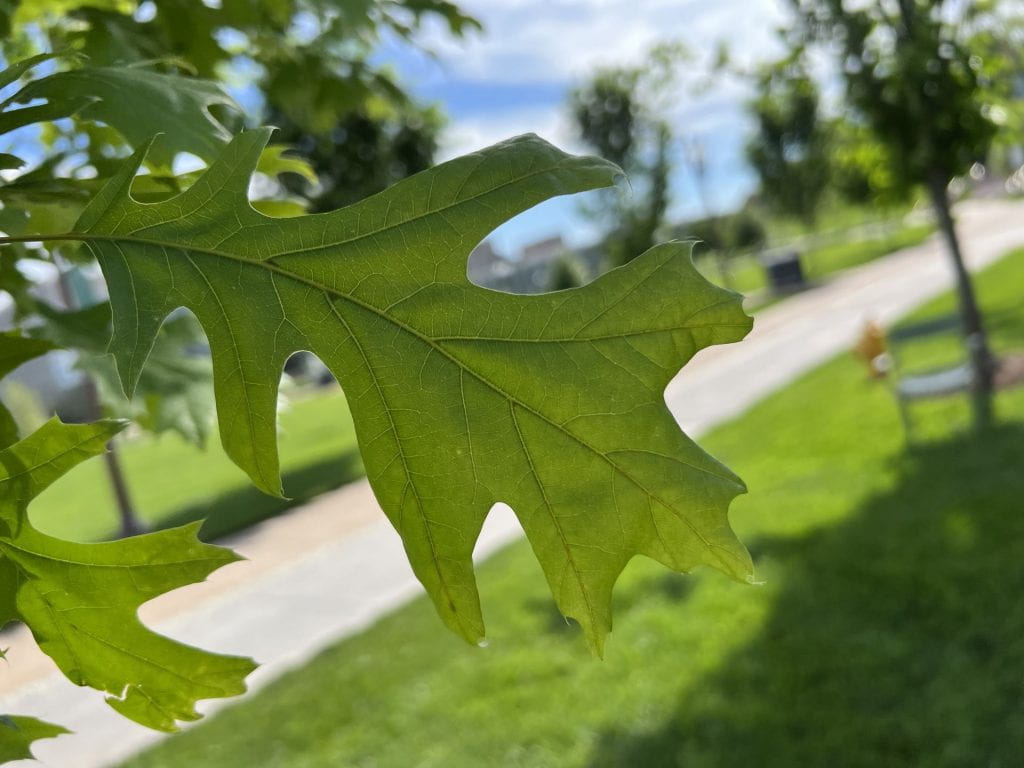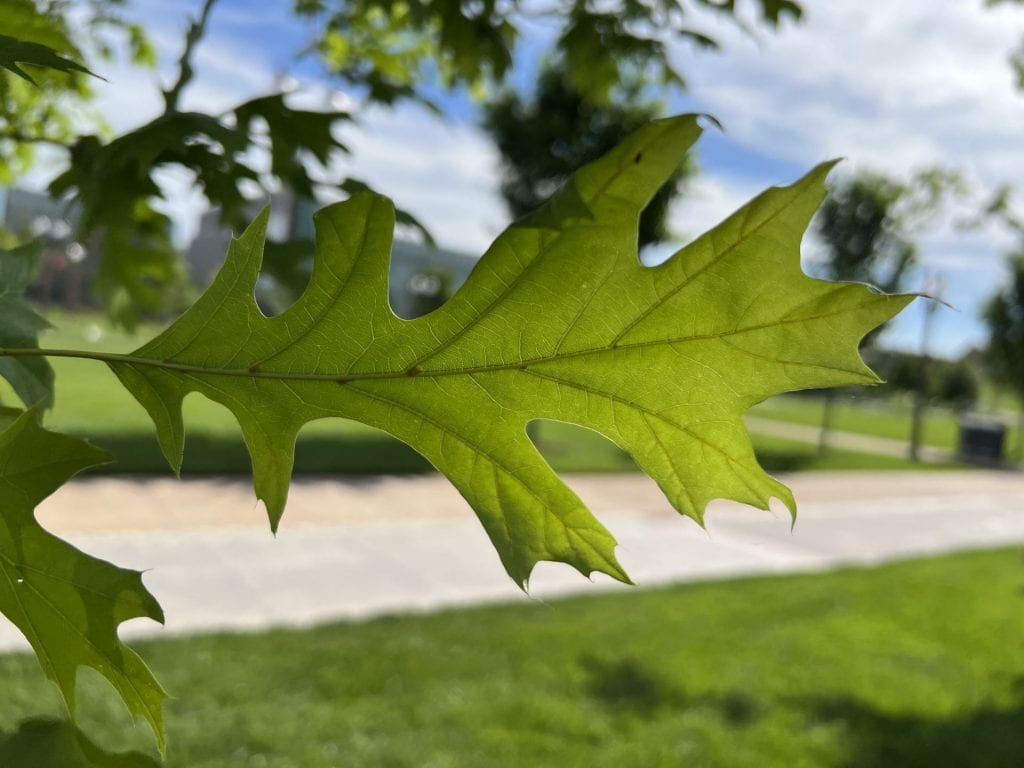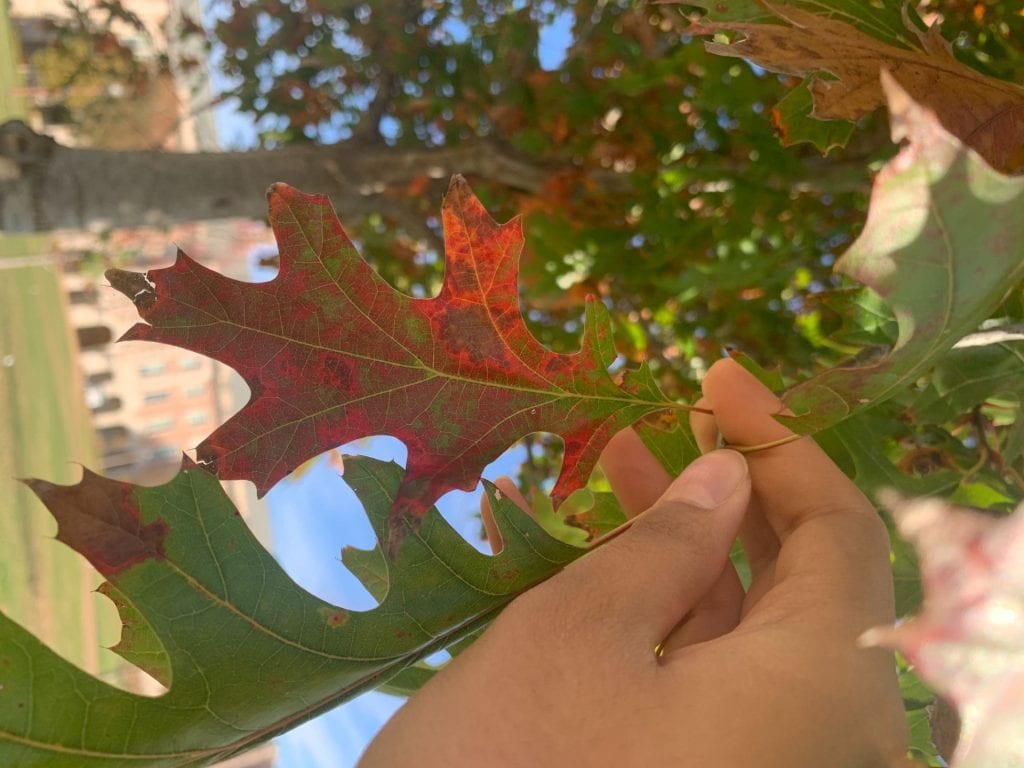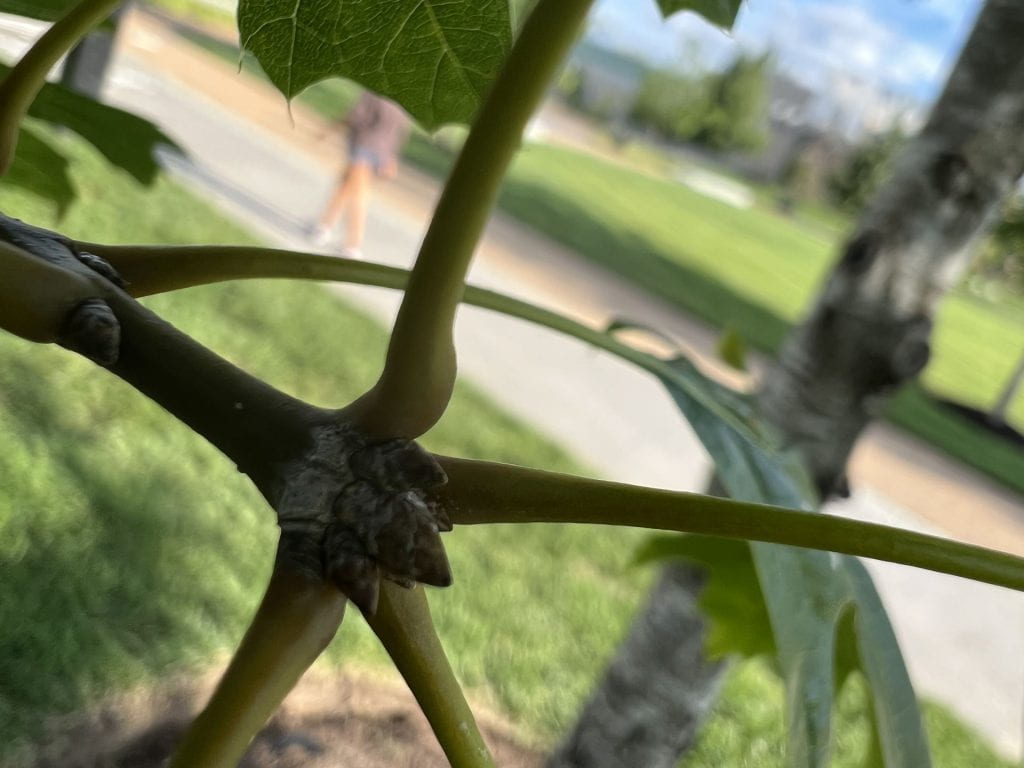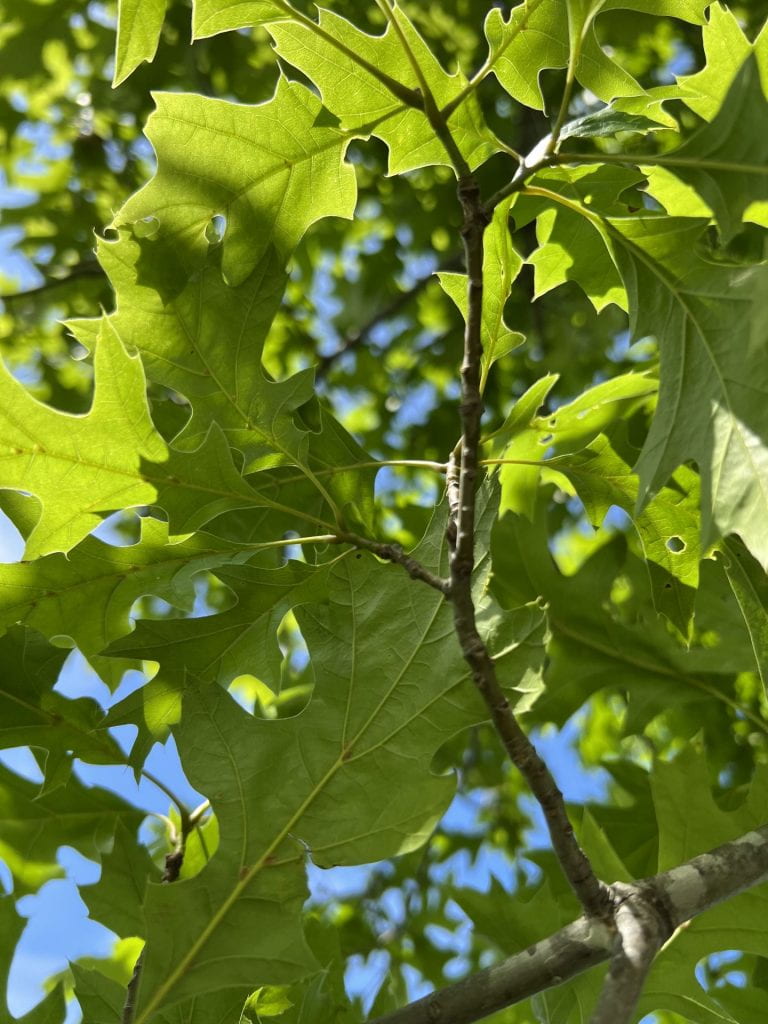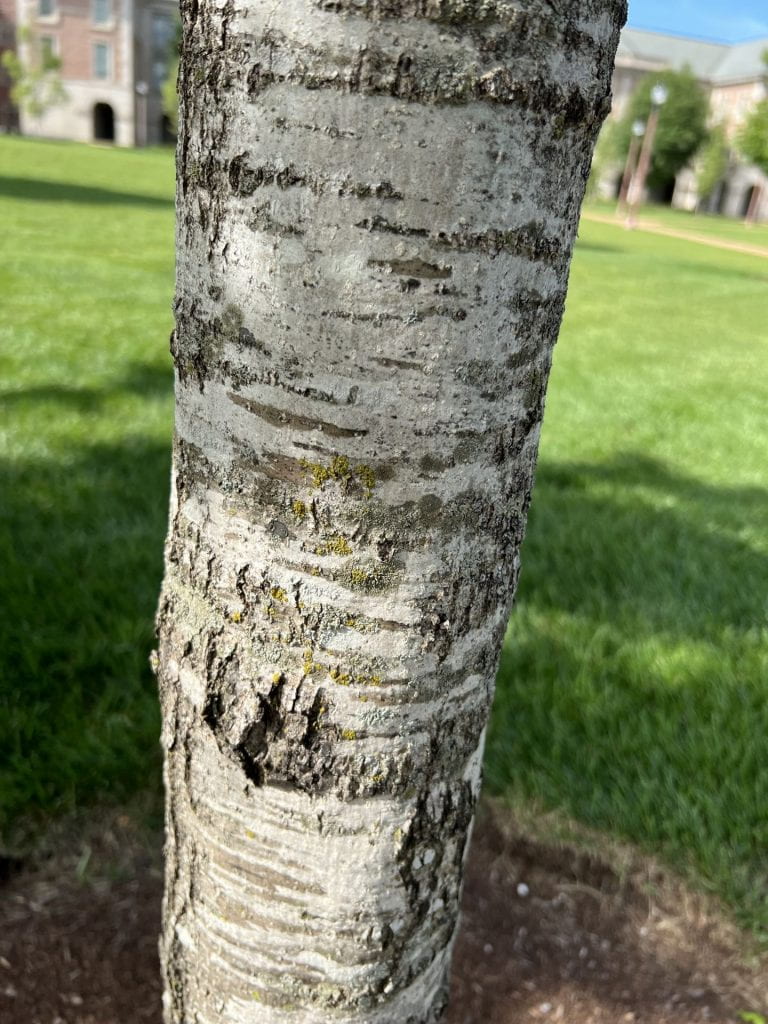Leaf Identification
The Shumard Oak has simple (no leaflets), alternately arranged leaves with 5-9 awned (bristle-tipped) lobes. The sinuses are deep and U-shaped. At lower vein axils on the leaf underside, there are tufts of fuzzy orange hairs.
Twig and Bud Identification
The twig is gray-brown and smooth when mature, with triangular leaf scars. Early twigs are green with pale lenticels (pores). The buds are many-scaled, bronze, and pointed, but not sharp. The terminal buds are clustered.
Bark Identification
The Shumard Oak has smooth, light gray bark dotted with horizontal notches when young. The bark will mature to a light brown with pale scales and dark brown furrows between the scales.
Fruit Identification
The fruit of the Shumard Oak is an acorn. The acorn averages 1″ in diameter, and is ovate. The acorn cup is quite shallow and flat, leaving most of the nut exposed. The acorn ripens in the fall.
Flower Identification
The Shumard Oak is monoecious, with staminate (male) and pistillate (female) flowers existing separately but on the same tree. The staminate flowers are green hanging catkins (long, slender clusters of unisexual flowers), and the pistillate flowers are solitary or paired and held close to the branch. The flowers bloom in spring
Oak ID Tips
- The Shumard Oak has leaves with wider and deeper sinuses than those of the Northern Red Oak, which has similar leaves and an overlapping range. The petiole of the Shumard Oak is also typically longer than that of the Northern Red Oak.
- Compared to the Nuttall Oak, the Shumard Oak has a longer terminal bud (over 1/4″) and a more shallow acorn cup.
- The leaf of the Shumard Oak is larger than that of the Scarlet Oak, and they have little habitat overlap as Scarlet Oak prefers uplands, while Shumard Oak prefers lowlands.
